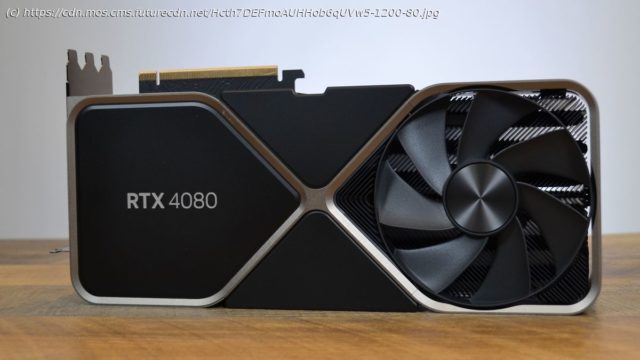How did Nvidia fare over the past year? Strap yourself in tight, because the ride’s a bumpy one…
Over the past year, Nvidia has certainly experienced its fair share of problems and controversies, as you’re unlikely to have missed. Good things happened in 2022, certainly, but there were a fair number of bad occurrences, and even some ugly ones (melting adapters on top-end GPUs springs to mind in that category). Without further ado, let’s get cracking on summarizing Nvidia’s progress – or lack of it in some cases – during 2022.
Nvidia’s Lovelace GPUs succeeded Ampere, with the first next-gen model coming out in mid-October, the flagship RTX 4090. That was followed by the RTX 4080 a month later, and while both desktop graphics cards were undeniably fast – particularly that flagship – they were both equally undeniably dogged with some thorny problems.
Let’s start with the RTX 4090 and the case of the melting adapters. Even before the RTX 4090 came out, we knew it would be a powerful but power-hungry beast, and so it came to pass, with the flagship sporting a TGP of 450W. So, any buyers had to take care that their power supply could handle that, and that their case design could cope with the heat produced by the RTX 4090 (and that the GPU would fit inside the case in the first place, of course).
However, not long after the RTX 4090 emerged, worrying reports of melting adapter cables reached our ears. These were few in number to start with, and Nvidia was quick to say it was investigating, but gradually these complaints multiplied.
The problem was being encountered by those who used the adapter supplied with the RTX 4090 so it could be connected to an ATX 2.0 power supply. (Those PSUs are what most PC owners have, with not many folks having upgraded to the very new ATX 3.0 models. But the 4090 comes with a 16-pin power connector that works directly with ATX 3.0 PSUs, and doesn’t fit ATX 2.0 models – so with the latter, the adapter has to be used).
Unfortunately, that adapter was melting in some cases, and damaging the graphics card, too, in some of those instances. Which is obviously a terrible situation (not to mention the fire risk element, if you’re not around when the smoking begins).
Now, we should note very clearly that according to the Nvidia investigation, as of mid-November, there were only 50 cases globally. That’s 50 cards in purported sales of something like 125,000 boards, which if correct, would mean the chance of a melting adapter is very unlikely. As the big Reddit mega-thread (opens in new tab) on this issue points out, the chance of a melt being experienced is 0.04% – but still, it can happen.
There was lots of theorizing about why the adapters were melting, and the most prominent theory – that the adapter wasn’t seated properly in its socket in the GPU – was confirmed by Nvidia to be the most likely culprit. As Nvidia told us: “Our findings to date suggest that a common issue is that connectors are not fully plugged into the graphics card.”
Part of the problem here, though , is that to fit this gargantuan graphics card in your PC, you have to bend the power cable round quite tightly (maybe with it pressed up against the side panel of the case), and this could put strain on the adapter and perhaps begin to pull it out of the socket slightly.
What’ll be Nvidia’s final conclusion on this affair? We still don’t know that at the time of writing, but this has left a somewhat sour taste in the mouths of some buyers who paid a lot of money – a small fortune, in fact – for the Lovelace flagship.
However, we should make it clear that the RTX 4090 itself is a jaw-droppingly speedy high-end GPU, and an incredible performance high point, make no mistake on that (for gamers and creatives alike). But a design flaw like this, no matter how very uncommon it might be, is really quite a serious drop of the ball from Nvidia (even if the company is offering expedited returns for affected graphics cards, as you might expect). No matter how great the RTX 4090 might be in raw performance terms, this episode has still tarnished Nvidia’s reputation to an extent.
Let’s move on to the RTX 4080, which may not have suffered from melting controversies, but actually caused more of a stir than the RTX 4090 in the end – thanks to pricing, and the fact that it turned up as two variants, one of which was quickly canceled.
When Nvidia revealed the RTX 4080, two models were shown off – one with 16GB of VRAM, and the other with 12GB (and a lesser spec GPU chip). Immediately there was an outcry about the latter lower-tier model, and how relatively pants it was – for its price – and the undoubted confusion caused by having two such very different flavors of RTX 4080. Especially when one of those flavors looked suspiciously like an RTX 4070 in RTX 4080 clothing (with that theory very much underlined by RTX 4070 Ti rumors later in the year).
Following all this controversy, Nvidia famously ‘unlaunched’ the graphics card and consigned it to the dustbin. (That said, its resurrection is rumored to be imminent as the aforementioned RTX 4070 Ti, but that story will be for next year).
Price-wise, like the scrapped lower-tier model, the RTX 4080 16GB that went on sale was still a price/performance nightmare. Particularly when custom third-party boards pushed up the already exorbitant MSRP ($1,199 in the US) to dizzying heights that made them almost as costly as the RTX 4090 – which is very much a faster GPU.
So why on earth would you buy the RTX 4080, and not the flagship? That was the thinking of quite a few folks, and the value proposition of the RTX 4080 prompted us to call it the GPU that Nvidia should have canceled (referencing the aforementioned canned 4080 12GB, of course).
And going by sales estimates floating around via the rumor mill – with some pretty consistent approximations – it seems GPU buyers agreed, and RTX 4080 sales flagged, trailing the RTX 4090 by a long, long way.
All in all, the Lovelace graphics card launches for 2022 were seriously problematic in some respects, then.






